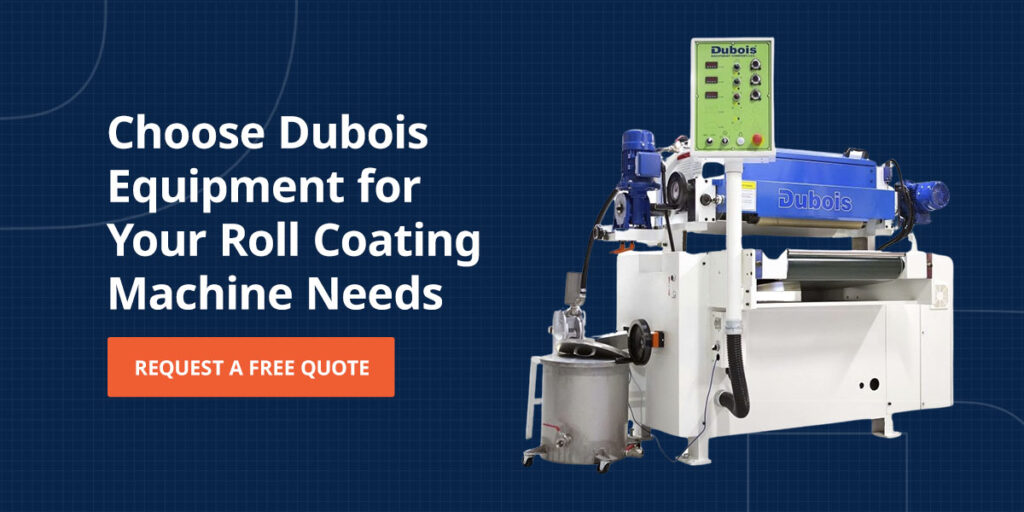
Industrial roll coaters are an essential part of many manufacturing applications that involve flat surfaces and targets, from cabinets and flat-panel doors to flooring and aluminum siding. Operations use this equipment to apply various surface coatings, including paint, varnish, oil, liquid adhesive and other finishes. Roll coating is quick and efficient, particularly for manufacturing lines producing a stable configuration.
The primary role of a roll coater is transferring a coating from a roller to a workpiece’s surface. Depending on the coating operation’s complexity, various equipment models work better than others. Basic models like single-rotating machines are economical for less demanding finishing projects, while more advanced equipment such as multi-head and combination coaters can apply multiple coatings in the same production run.
Roll coaters transfer coatings using various methods of thickness control, including transfer rolls, metering blades and doctor rolls. Roller coating is highly precise, offering excellent transfer rates for nearly any flat substrate. Some roll coater models — like differential machines — feature individual components the user can adjust for optimal speed and direction to ensure maximum production control.
The transfer process requires several key components, including:
The distance between the application and doctor roll and the rotation speed determines the film thickness. The application roll can use covers with different materials and densities to facilitate the coating process. Operators typically set the application roll’s height based on the hardness or texture of the material needing coating.
Operators determine roller and conveyor speeds based on production requirements. Depending on the complexity of the machine’s design, some systems may contain multiple rollers or blades to ensure coating accuracy and high productivity.

If you’re looking to partner with the industry’s top manufacturer of roll coating machinery, Dubois Equipment is the perfect choice. We have decades of experience providing operations across various industries with advanced solutions that maximize efficiency, quality and profitability. Contact us online today to learn more about how our equipment can benefit your business.